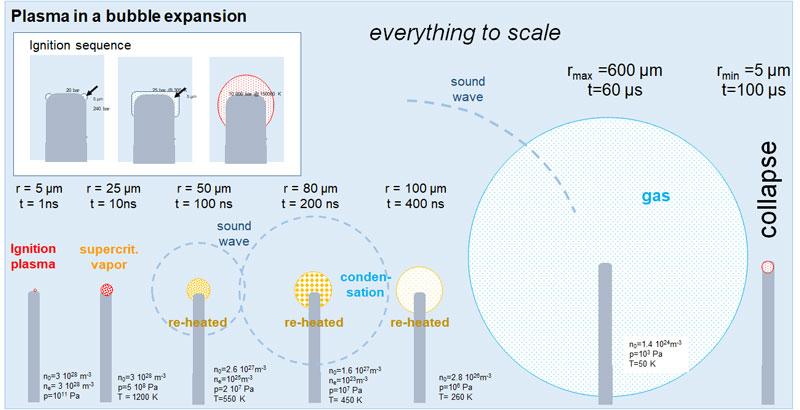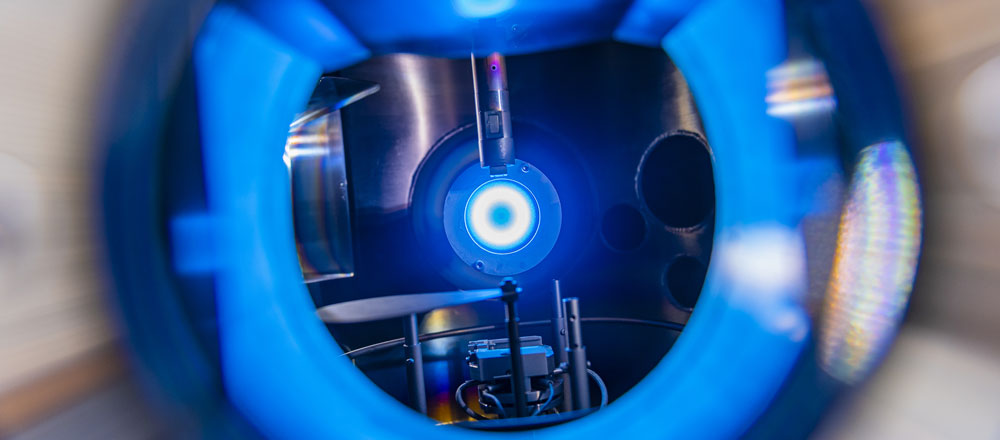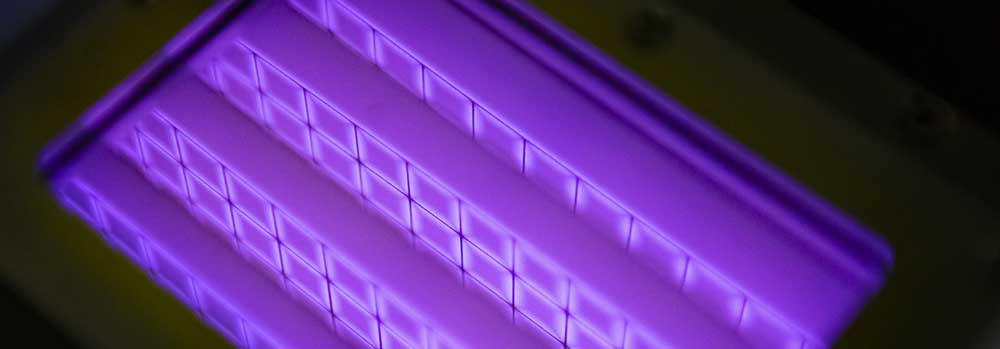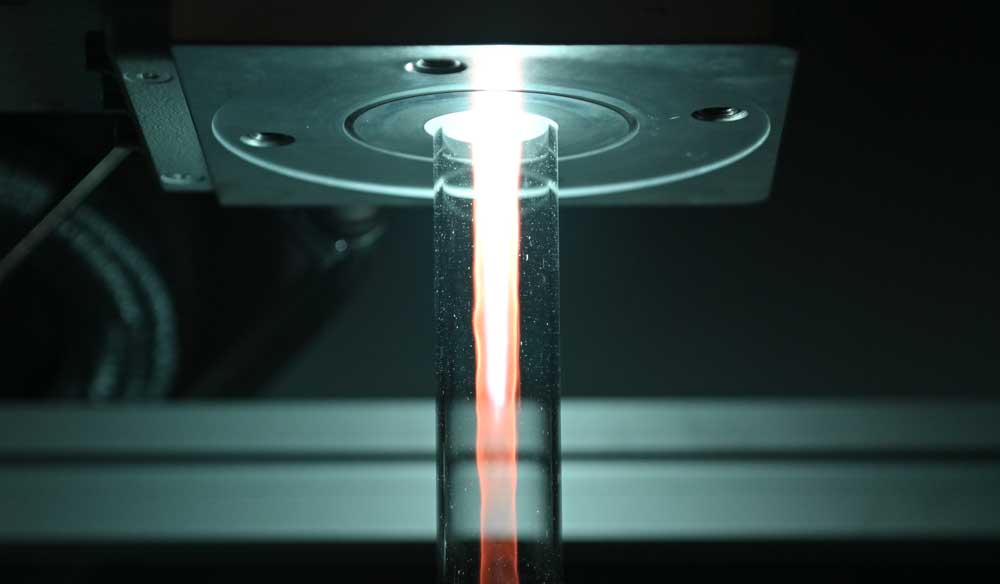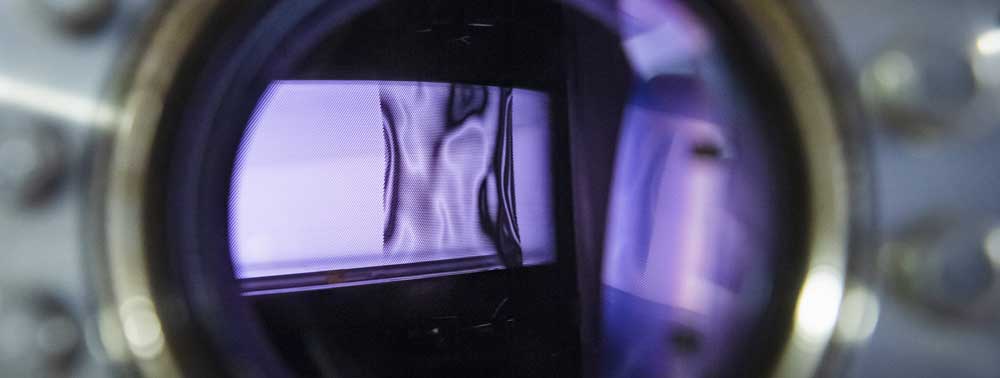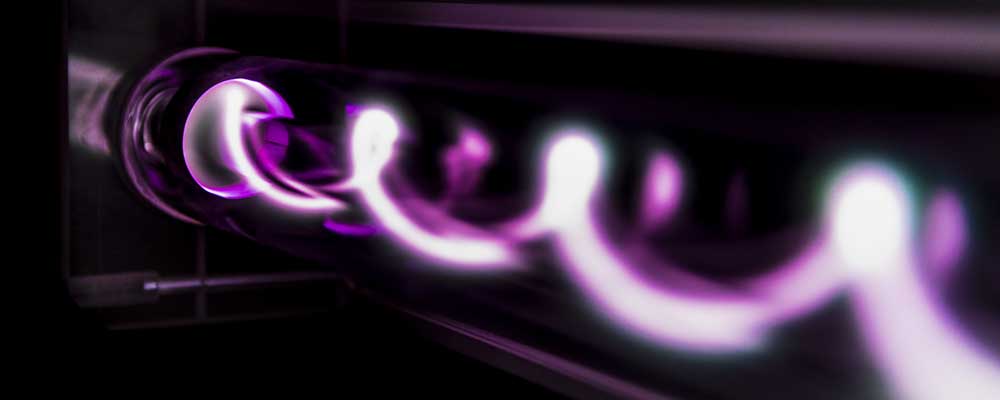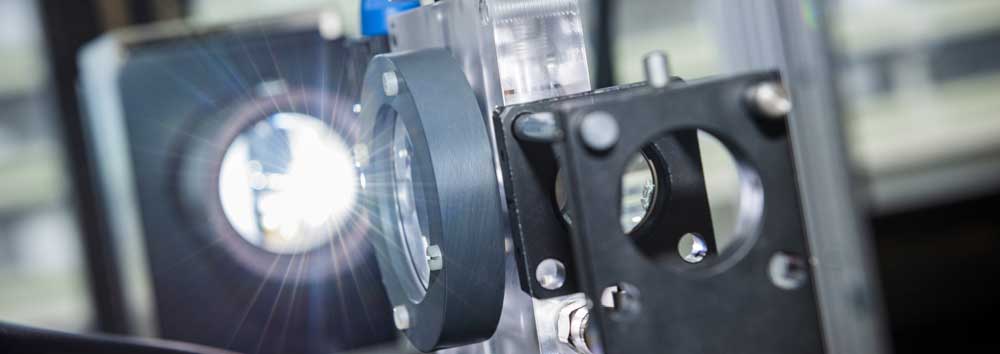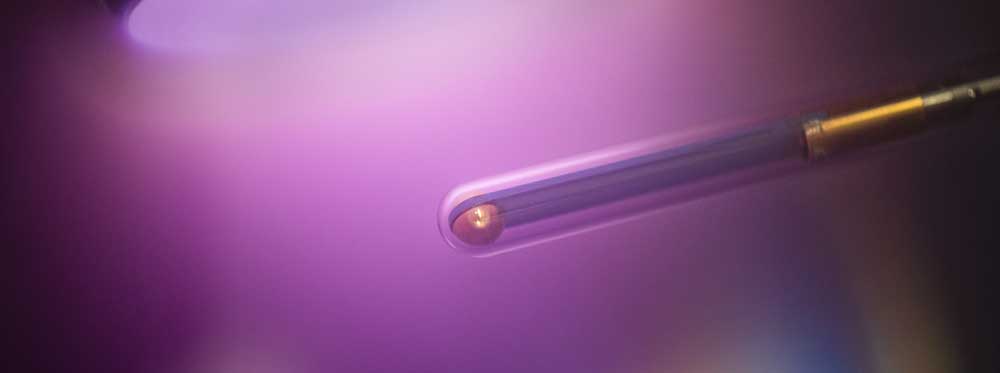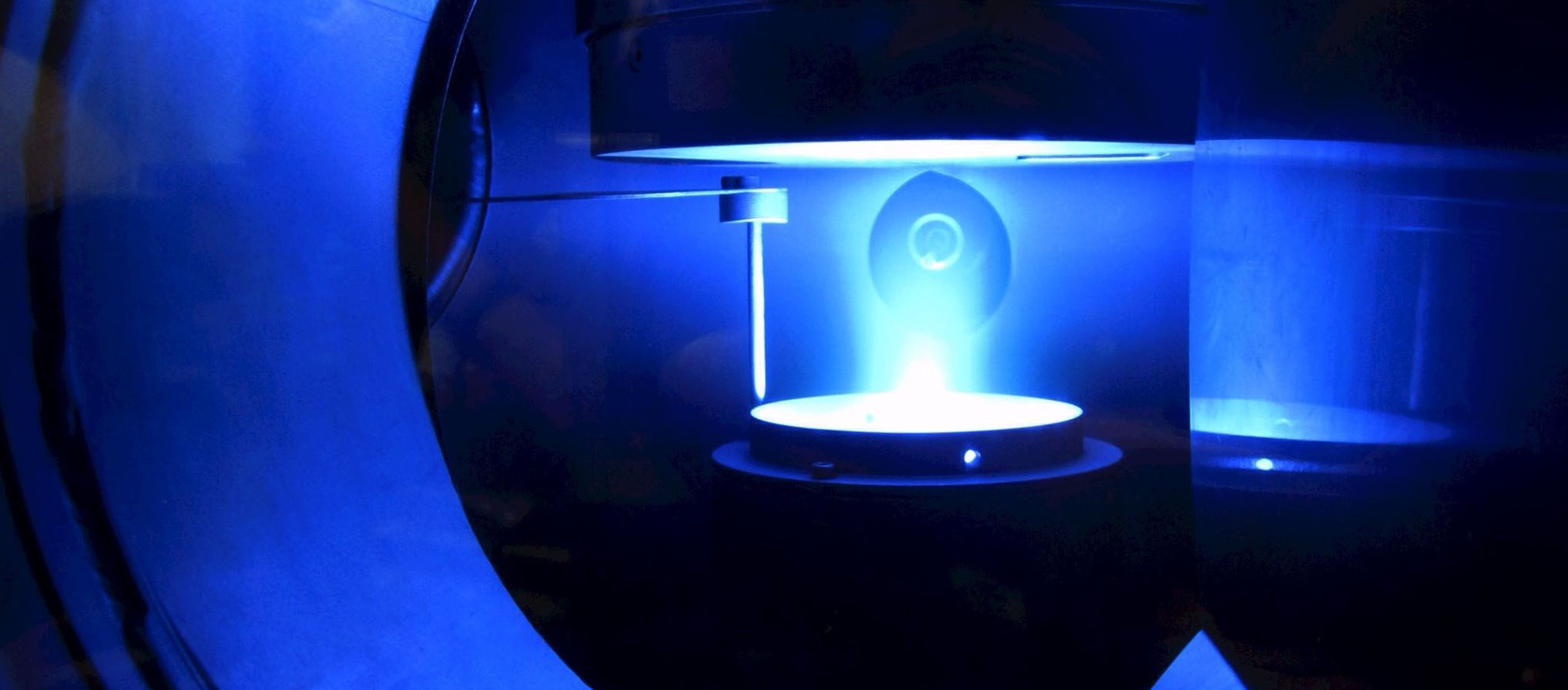Project B7 - Nanosecond plasmas
Extreme Conditions in Plasma in Liquids
Nanosecond plasmas in liquids play an important role in the field of decontamination, electrolysis or plasma medicine. The understanding of these very dynamic plasmas requires information about the temporal variation of species densities and temperatures. This is analyzed by monitoring nanosecond plasmas that are generated by high voltages (HV) between 14 kV and 26 kV and pulse lengths of 10 ns applied to a tungsten tip with 50 µm diameter immersed in water. Ignition of the plasma causes the formation of a cavitation bubble that is monitored by shadowgraphy to measure the dynamic of the created bubble and the sound speed of the emitted acoustic waves surrounding this tungsten tip.
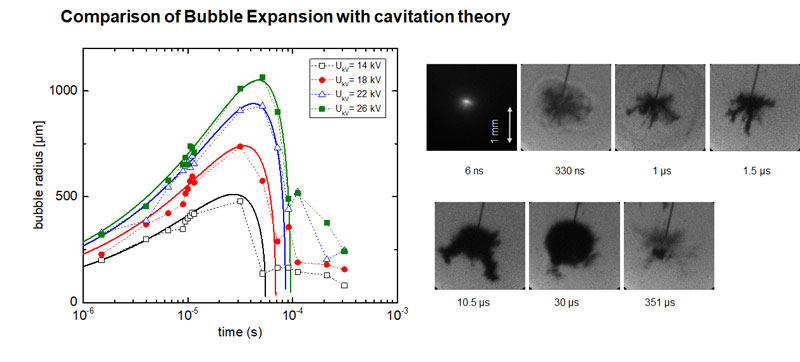
The temporal evolution of the bubble size is compared with cavitation theory yielding good agreement for an initial bubble radius of 25 µm with an initial pressure of GPa at a temperature of 1200 K for a high voltage of 18 kV. This yields an initial energy in the range of a few 10-5 J that varies with the applied high voltage. The dissipated energy by the plasma drives the adiabatic expansion of water vapor inside the bubble from its initial supercritical state to a low pressure, low temperature state at maximum bubble expansion reaching values of 10^3 Pa and 50 K, respectively. These predictions from cavitation theory are corroborated by optical emission spectroscopy (OES). After igniting the nanosecond plasma, the electrical power oscillates in the feed line between HV pulser and plasma chamber with a ring down time of the order of 60 ns. These reflected pulses re-ignite a plasma inside the expanding bubble periodically. Broadband emission due to recombination and Bremsstrahlung becomes visible within the first 100 ns. At later times, line emission dominates. Stark broadening of the spectral lines of H_alpha (656 nm) and OI (777 nm) is evaluated to determine both the electron density and the electron temperature in these re-ignited plasmas.
